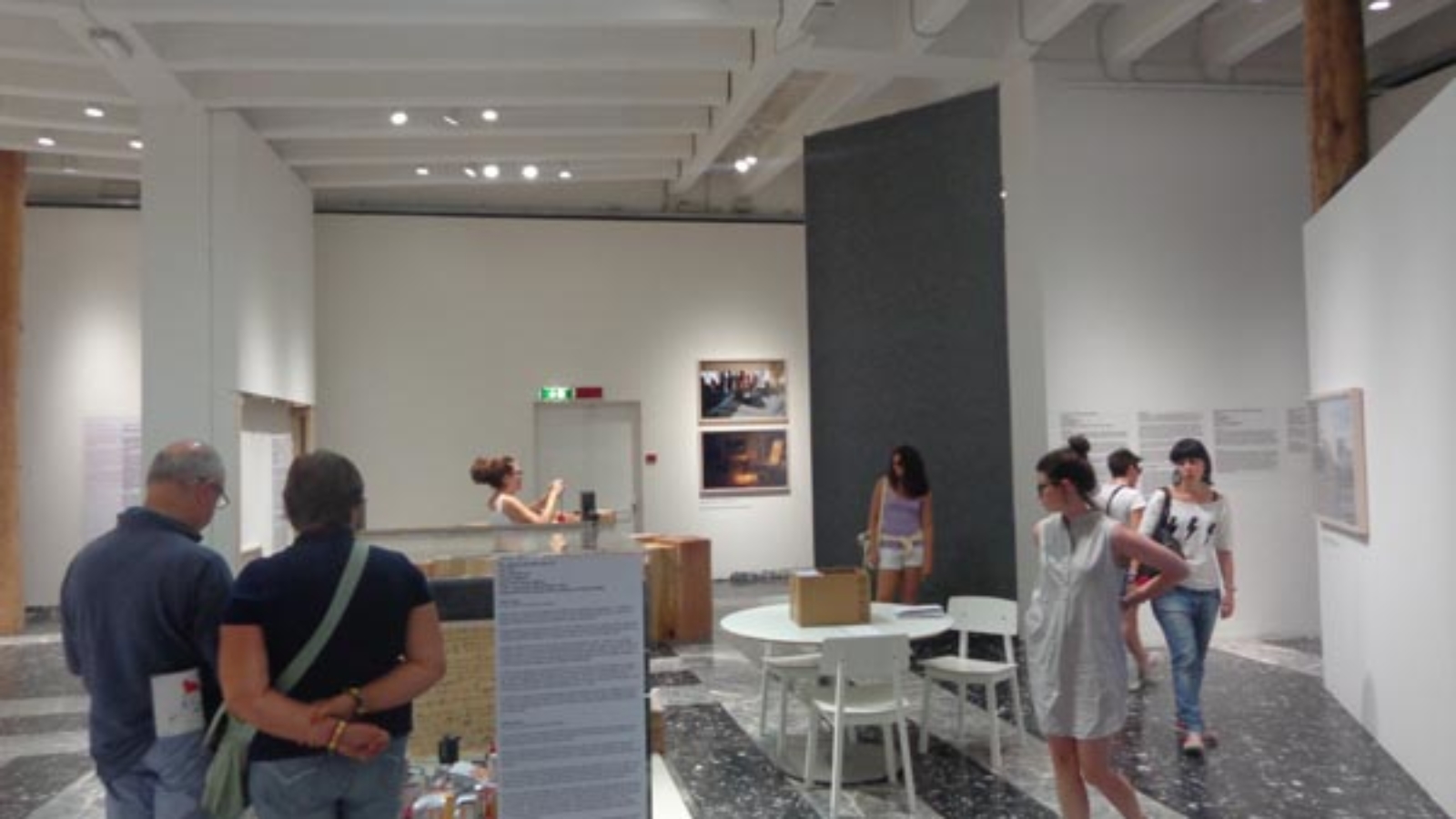
Although the Venice Biennale mobilize contemporary artists of renown and be an international and fascinating event for those who live the daily life of plastic art, the language of the works and installations, some pure metaphors or concepts on a subject, is hard to be understood by the lay public. Maybe that’s the reason why contemporary art is so criticized in a time when is in discussion what is art and what is not.
Often, the poetic of the concept delights far more than the work itself and when the spectator stands in front of it to appreciate, feels the material image do not correspond or is not formatted with the creative journey he made about the proposed meaning based on the artist concept.
Is like reading a fiction book and then watching the movie on the same subject. There are light years of distance between the physical work, material, to the creative conception of the spectator about the artwork. This space between visual reality and the magic of thinking in poetic art will never be filled. The thought and creativity, both from artist as the spectator, travel to infinity and matter is finite.

That is the reason why there are a sort of disappointment felt by the lay visitor to an exhibition of contemporary art and that consequently restricts the interest to a select group. It is a pity! Contemporary art translates, with refinement, the paradigms of modern society. Understand the actuality under the art look is to enhance the senses.
This reflection is necessary to interpretate the content of the curators of Biennials which occurs in every corner of the planet, when conduct the general theme of the exhibition to social, environmental and political topics. In successive Biennial in Venice this posture is visible, especially at the 56th International Exhibition of Art 2015, where the attention is focused to the most urgent geopolitical issues. Read more in the Bienniale site in Italian.

In this pavilion, which has as subtitle “Contemporary artists of Armenian diaspora”, are exhibited works of 18 invited artists, among them the Brazilian Rosana Palazyan, born in Rio de Janeiro, in the Engenho de Dentro, which is part of the third generation – the grandchildren of those who survived the massacre perpetrated by the Ottoman Empire in the giant and compulsory march to take Armenian out of the current Turkey.

The best artist of the Exhibition, according to the jury, was Adrian Piper and who won the Gold Lion, whith the work The Probable Trust Registry: The Rules of the Game #1-3 (USA, 1948; Arsenale, Corderie). “Avant-garde artist, Piper has renewed conceptual practice inserting personal subjectivity – of his being, of his audience and the audience in general. His presentations invite to engage in a lifelong practice of personal responsibility and draw attention to the ephemeral and fleeting value systems.”. Original publication here.

O Leão de Prata ficou por conta de uma jovem artista da Coreia do Sul, Im Huen-Soon, com Factory Complex, 1969. “For an exciting video installation that explores the nature of insecurity in relation to the conditions of women’s work in Asia. Factory Complex takes the form of a documentary, but through a direct and mediated slightly with her subjects and their working conditions.”
Three special mentions for Harun Farocki (Germany), Collective Abounaddara (Syria), Massinissa Selmani (Algeria). Harun received for being a fundamental figure in the cinema after the war. The Collective of Syria for its extraordinary courage in documenting the political conflict and struggle for human survival in today’s Syria without sneak. To Massinissa Selmani for work performed through a simple medium but able to focus beyond its dimension. The jury also decided to award the pavilion of the United States for the representation of Joan Jonas, an important artist for his work and his influence – They Come to Us Without a Word.
Brazilians

The Brazilian pavilion is represented at the Venice Biennale 2015, entitled “Is so many things that do not fit in here”, with works of the artists André Komatsu, Berna Reale and Antonio Manuel, invited by the curator Luiz Camillo Osorio. Both three built a place of imprisonment as a critical to a false freedon where transits the contemporary individual.
“Is like if the trio says that to be free, we must be locked in a space surgically clean, fake, set up by our imagination, aesthetics of ‘condominium’, citing Christian Dunker. And there are also the imprisionment of another, in economic poverty, physical violence, social and cultural, which is a way to guarantee our own and mean survival”, from the website Brazilians.

Another Brazilian who were present in Venice isSonia Gomes, born in Minas Gerais, who is among the 136 selected by the curator of the Biennale, the Nigerian Okwui Enwezor. Sonia works with fabrics, embroidery, twisted and torn. “The material comes asking for help. ‘Don’t let me die. Let me live in another body’. Read more about Sonia Gomes.



Add a Comment